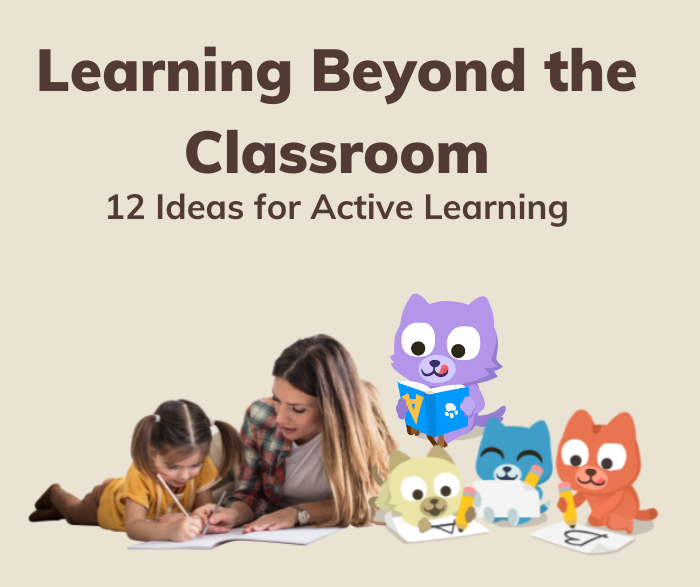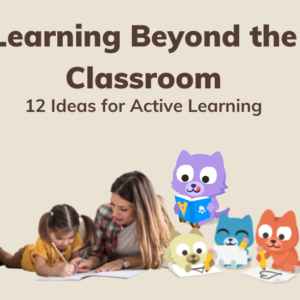While some schools open up again and others stay fully remote, it’s not yet clear just what the full ramifications of COVID-19 will be on our kids’ learning. But from school closures and technical difficulties to higher stress and anxiety for students, many parents are wondering how to support their kids at home.

As we reflect on the effects of school closures, remote classes, and other major disruptions to normal life, many parents can’t help but wonder: is my child falling behind in school? And if so, how bad is it?
If you’ve found yourself asking the same question, you’re not alone. According to one survey in the United States, nearly 9 in 10 parents are concerned about their children falling behind academically as a result of COVID-19 related school closures.
It’s easy to get caught up in statistics about “learning loss” and “summer setbacks,” and to fixate on falling grades or test scores. Some are calling for schools to implement remedial programs and supplemental classes to make up for what students have lost.
But looking beyond the scores and statistics, what have students really lost during school closures?
They’ve lost opportunities to see their friends, and interact with peers on a regular basis.
They’ve lost the freedom to explore their identities outside of their own homes.
They’ve lost chances to collaborate on projects with their classmates.
They’ve lost time getting to know their teachers and classmates personally.
And, perhaps most frighteningly of all, many of them have lost their excitement about school, and their enthusiasm for learning.
When we talk about helping kids recover from what they’ve lost in their education, we shouldn’t just focus on the test scores. After all, education as a whole is less about facts and figures, and more about having a learner’s mindset.
We don’t teach science because we expect students to memorize the periodic table; we teach science to help kids learn how to think like a scientist—by asking questions, making a hypothesis, and testing their theories.
We don’t teach social studies to fill students’ heads with names and dates—we teach it so that they can think like historians and put problems into context.
We teach math so that kids can think like mathematicians. We teach art so that kids can think like artists.
We teach so that kids know how to learn, and how to love learning—even outside of the classroom.
If students don’t know how to be learners, no remedial program will help make up for what they have lost. But if they do—if they know how to ask questions, solve problems, and think critically—then no temporary setback can stop them from learning what they need to know.
Rather than focusing on kids’ loss of learning, perhaps we should be addressing a far greater threat: a loss of curiosity.
The good news? There are so many ways to support curiosity-driven learning at home, and to ensure that your child maintains their love of learning no matter what.
Many parents are tempted to make at-home learning mimic the kind of learning that kids do at school (such as with worksheets, review books, and repetitive exercises). But these are two different learning environments, which can offer kids different sets of skills and benefits.
Learning at home doesn’t need to look the same as learning at school—and, in fact, it shouldn’t.
Have fun with it!
Time off from school should be fun, so learning outside of school should be fun, too.
Remember that kids learn best when they are intrinsically motivated; that is, when they are doing something they want to do rather than what someone else wants them to do.
When thinking of learning opportunities to do at home, start with your child’s personal goals and interests. And if you’re not sure what those might be, spend some time brainstorming ideas with your child.
Here are some fun ways to keep learning alive at home:
Conduct science experiments in the kitchen.
The world is full of science, and your kitchen is no exception. Try mixing water and cornstarch to learn about Non-Newtonian Fluids (AKA “oobleck”), or discover how to make your very own invisible ink to write secret messages.
Watch TV in different languages.
Is your child learning a second language? Try watching their favorite cartoon in another language, and see how much new vocabulary they can learn. (Some kids have a favorite movie that they’ve seen a million times, and can recite every word. This is a great place to start!)
Download learning apps and games.
Odds are, your child enjoys some screen time outside of school. Why not make it educational? From practicing math skills to learning a new language, there are tons of skills your child can learn through entertaining apps and games.
Create a personal project.
How often do kids get the chance to learn whatever they want? Encourage your child to create a personal project about a passion or interest that they have. They might create a whole comic book or film a stop-motion movie. Maybe they want to design their own sneakers or invent a board game. Whatever they choose, they’ll really own their learning process and end up with something they can be proud of.
Form a book club.
Reading is always more fun with friends! Help your child start a book club (virtual or in-person) with their friends. Not only will this help keep up their reading fluency and comprehension while they’re away from school, but it also invites them to talk about their reading and improve their social skills with peers.
Solve real-life math problems.
Math is all around us! Have your child help calculate the shopping total, measure ingredients, or estimate driving distances—you’ll be surprised how many opportunities for math will come up on a daily basis. And they thought they’d never need to know it!
Keep up with current events.
Keep your kids in the loop by discussing what’s going on in the world. Help them make a social studies connection by explaining how current events might relate to the events of the past—and don’t be afraid to ask for their insights and opinions, too. (Want kid-friendly news at your child’s reading level? Try Newsela!)
Record scientific observations.
One skill every scientist needs is careful observation. Spend time with your child observing things in nature, such as the weather, the lunar cycle, animals, plants, or insects. You can even record your observations and use them to make predictions and hypotheses of your own!
Keep a travel journal.
Going somewhere for a holiday or long weekend? Have your child record their adventures in a travel journal—complete with stickers, if that’s their style. Travel journals are a fun way to practice writing skills, and a great memento to look back on your trip.
Learn a new craft or hobby.
The best way to keep learning alive is to keep on doing it! Any new skill is a chance to exercise the brain, and creative hobbies are no exception. Whether they want to learn to make jewelry, play the guitar, or do ballet, encourage your child to learn something new.
Look for events at your local library or bookstore.
Schools aren’t the only place where people are passionate about helping kids learn! Check out virtual and in-person events at your local libraries, bookstores, or rec centers to see what activities they have going on.
Turn Family Game Night into Family Learning Night.
Some kids are super motivated by competition—especially when their families are involved. Need to practice multiplication? Why not race to see who can complete the most problems in under a minute, or compete to see who can solve the problem with the most digits?


